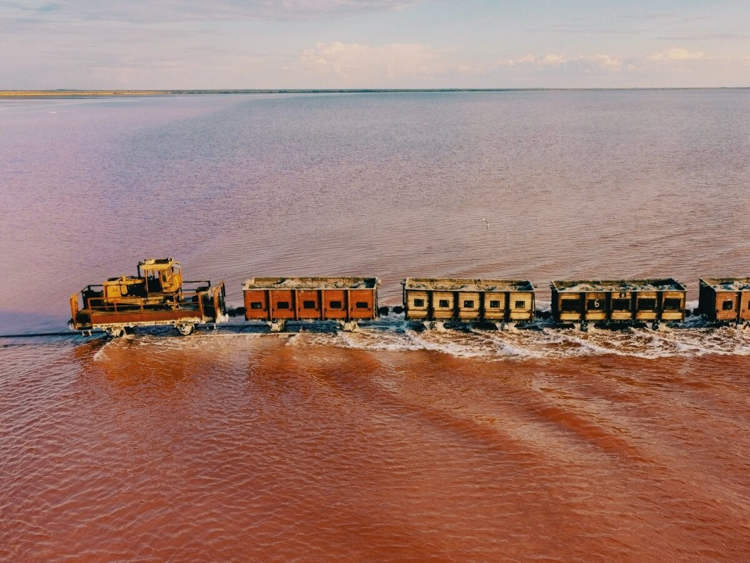Lake Burlinskoye, a salty lake located in Russia’s Altai region close to the border with Kazakhstan, is famous both for its pink color during the summer and the freight train passing through it every day.
Seeing an old freight train seemingly floating over a pink lake in Western Siberia is quite a bizarre experience, but somehow it all makes sense. Lake Burlinskoye is the largest single salt deposit in Siberia, with a saltiness that rivals that of the Dead Sea. It is precisely this exceptionally high saltiness that attracts a species of microscopic brine shrimp called Artemia salina which, as they multiply, end up turning the lake bright pink during the summer months. Siberia’s pink lake is a strange enough sight, but what really sets Burlinskoye apart from other bodies of water is the freight train traversing it several times per day.

Photo: Nevsedoma
The train passing straight through Burlinskoye looks like it’s floating on the pink water, but not even the lake’s extreme saltiness could possibly keep the metal monstrosity afloat. It is running on metal rails laid through the lake during the Soviet era for a very specific purpose. You see, the train doesn’t just pass through the middle of the lake because it’s the shortest route, or simply because it looks cool, it is actually collecting valuable salt as it passes.
According to travel photographer Vadim Makhorov, the Salt Shaker train is equipped with special harvesting tools that disturb the lake bed and then collect the sediment in the train carts. The train passes through the lake multiple times a day and collects about 65,000 tons of salt every year, or enough to cover the needs of all humanity for 3 or 4 days.
“They literally scrub the lake bottom and bring the mixture of salt and silt into the train which gets into the water along the railway,” Makhorov said. “When you watch it for the first time, it looks so bizarre!”
Salt harvesting at Lake Burlinskoye dates back to the mid-18th century, with some Russian royals, like Catherine the Great, only allowing salt from this lake to be served at her table. The Soviets mechanized the process, laying tracks straight through the middle of the lake, where the salt concentration is the highest.






